1.) Annual update to the track forecast error cone.
One of the biggest changes this hurricane season will be adjustments to the NHC’s hurricane track map, or what most people call “The Cone of Uncertainty”. The cone will shrink.
The size of the tropical cyclone track forecast error cone for the Atlantic basin will be smaller this year. The cone represents the probable track of the center of a tropical cyclone, and is formed by enclosing the area swept out by a set of imaginary circles placed along the forecast track (at 12, 24, 36 hours, etc.). The size of each circle is set so that two-thirds of historical official forecast errors over the previous five years (2013–2017) fall within the circle.
Track errors have gone down over the last 10 years and forecasts have gotten better as well. In fact, since 2008, the size of the cone of uncertainty at 120 hours, or five days, has shrunk by 35 percent. Since last year, the size of the cone at five days has shrunk by more than 6 percent.

This cone does not encapsulate all impacts from a given storm or hurricane. In fact, most impacts will fall outside of the cone of uncertainty within a forecast out to a day or two. For this reason, among others, the NHC and other meteorologists will be leaning more toward forecast impacts rather than this cone alone in the upcoming hurricane season.
2.) The NHC Public Advisory will now discuss forecast information beyond 48 hours.
The NHC Public Advisory is a text product that contains a list of all current coastal watches and warnings and gives pertinent storm information, including general forecast and hazard (storm surge, wind, rainfall, tornadoes, surf) information. The forecast information contained within the advisory will now include information beyond 48 hours. Previously, these advisories were limited to a discussion of a tropical cyclone’s track and intensity forecast through 48 hours. This change will allow public advisories to discuss the track and intensity forecast routinely through 72 hours, and allow the flexibility to discuss the forecast through 5 days when conditions warrant.
To accommodate this change, the Tropical Cyclone Public Advisory section header:
DISCUSSION AND 48-HOUR OUTLOOK
will be changed to:
DISCUSSION AND OUTLOOK
This will allow forecasters at the NHC to discuss high-impact high-confidence storms, like Hurricane Maria in 2017, as much as 5 days in advance.
3.) The NHC Arrival Time of Tropical-Storm-Force Winds graphics will become operational in 2018.
The arrival of sustained tropical-storm-force winds is a critical planning threshold for coastal communities, as many preparedness activities become difficult or dangerous once winds reach tropical storm force. Frequently, this timing is estimated using the deterministic NHC track, intensity, and wind-field (size) forecasts, but such an approach doesn’t account for forecast uncertainty, and communities can be caught off guard if a storm speeds up or grows in size beyond what was forecast.
To provide guidance on when users should consider having their preparations completed before a storm, NHC began issuing experimental Time of Arrival of Tropical-Storm-Force Winds graphics in 2017. These graphics will become operational in 2018. The graphics are driven by the same Monte Carlo wind speed probability model that is currently used to determine the risk of tropical-storm- and hurricane-force winds at individual locations – a model in which 1000 plausible scenarios are constructed using the official NHC tropical cyclone forecast and its historical errors.
Users will also be able to overlay the standard tropical-storm-force wind speed probabilities with the timing information, providing a single combined depiction of the likelihood of tropical-stormforce winds at individual locations, along with their possible or likely arrival times. Examples of these graphics are shown below.

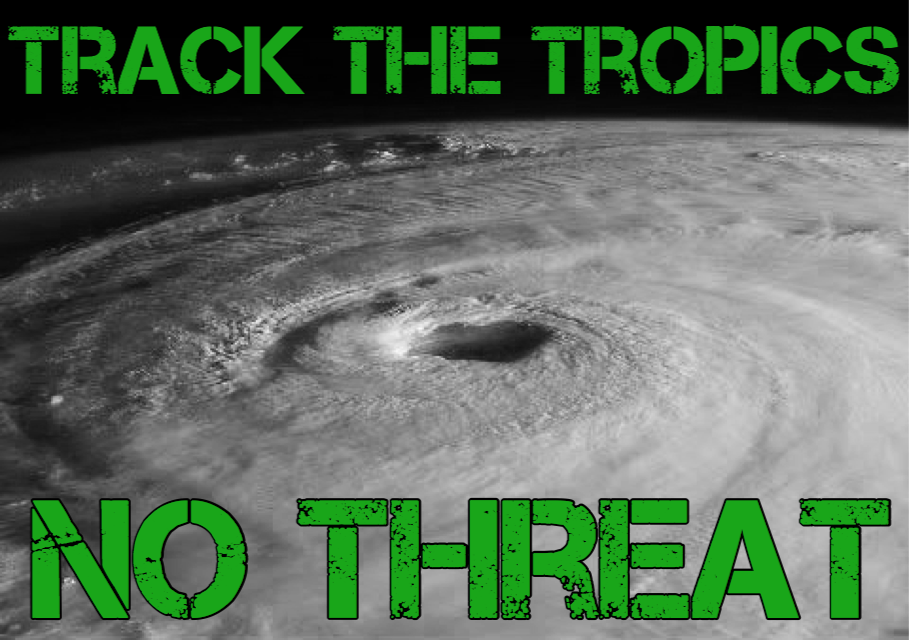
![[Map of 1950-2017 CONUS Hurricane Strikes]](http://www.nhc.noaa.gov/climo/images/conus_strikes_sm.jpg)
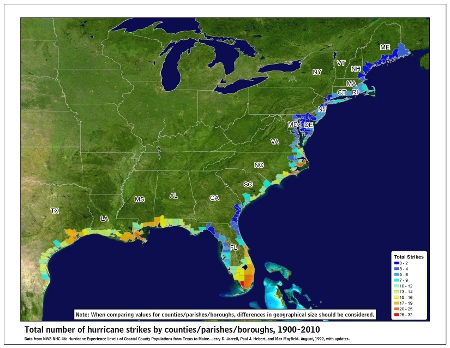
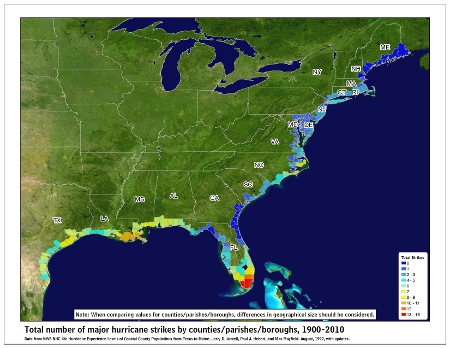
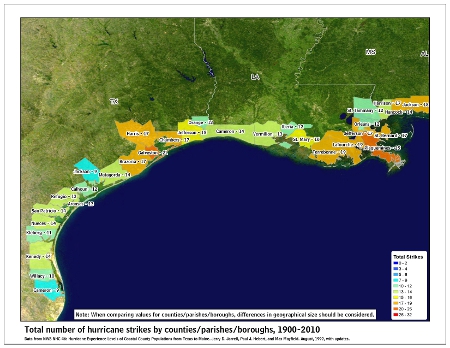
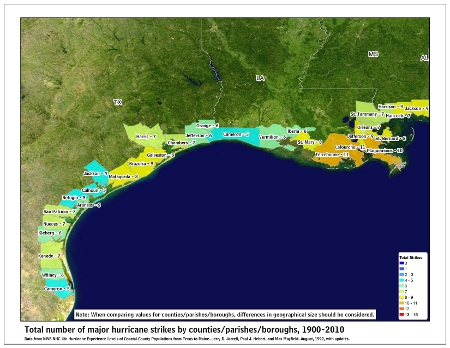
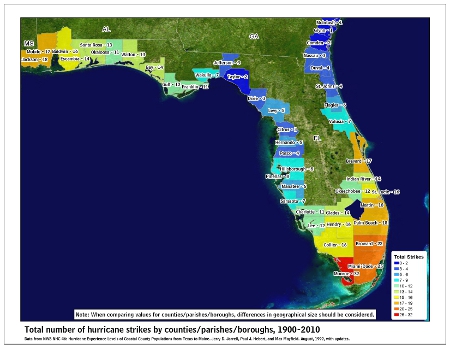

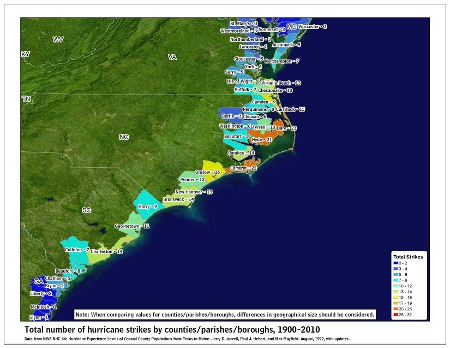
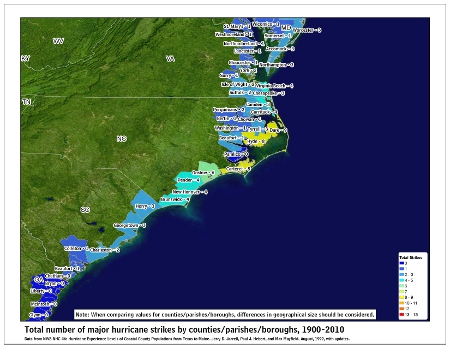
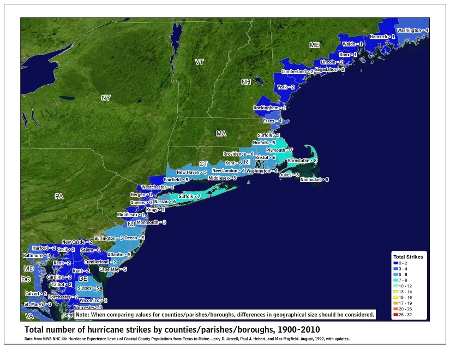
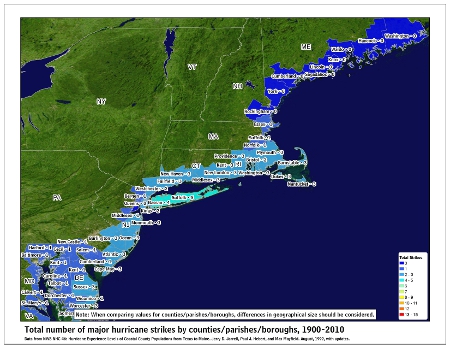
Facebook Comments